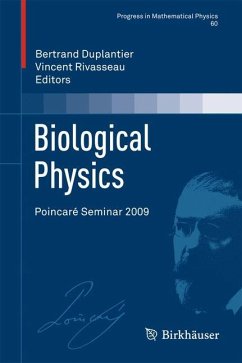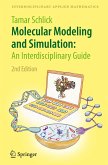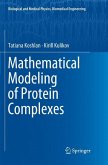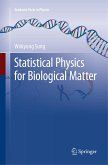This new volume in the Poincaré Seminar Series, describing recent developments at the interface between physics and biology, is directed towards a broad audience of physicists, biologists, and mathematicians. Both the theoretical and experimental aspects are covered, and particular care is devoted to the pedagogical nature of the presentations.
The first survey article, by Jean-Francois Joanny and Jacques Prost, describes the theoretical advances made in the study of "active gels", with applications to liquid crystals and cell motility. Jasper van der Gucht and Cécile Sykes then report on recent advances made with biomimetic model systems in the understanding of cytokinesis. The next article, by Jonathon Howard, presents several molecular models for motor proteins, which are compared with experimental results for kinesin. David Lacoste and Kirone Mallick then show theoretically that similar ratchet models of motor proteins naturally satisfy a fundamental time-reversal symmetry, the Gallavotti-Cohen fluctuation relation. Jean-Francois Allemand, David Bensimon and Vincent Croquette and their coauthors describe the latest advances made in the real-time single molecule study of the enzymes involved in DNA replication. Raymond E. Goldstein addresses the problem of understanding, from a physics perspective, the driving forces behind the biological evolution of multicellularity, using Volvocine algae as model organisms. Stanislas Dehaene finally addresses the major challenge of understanding the neuronal mechanism of consciousness, and speculates on the possible theoretical explanations of MRI experiments.
The first survey article, by Jean-Francois Joanny and Jacques Prost, describes the theoretical advances made in the study of "active gels", with applications to liquid crystals and cell motility. Jasper van der Gucht and Cécile Sykes then report on recent advances made with biomimetic model systems in the understanding of cytokinesis. The next article, by Jonathon Howard, presents several molecular models for motor proteins, which are compared with experimental results for kinesin. David Lacoste and Kirone Mallick then show theoretically that similar ratchet models of motor proteins naturally satisfy a fundamental time-reversal symmetry, the Gallavotti-Cohen fluctuation relation. Jean-Francois Allemand, David Bensimon and Vincent Croquette and their coauthors describe the latest advances made in the real-time single molecule study of the enzymes involved in DNA replication. Raymond E. Goldstein addresses the problem of understanding, from a physics perspective, the driving forces behind the biological evolution of multicellularity, using Volvocine algae as model organisms. Stanislas Dehaene finally addresses the major challenge of understanding the neuronal mechanism of consciousness, and speculates on the possible theoretical explanations of MRI experiments.








